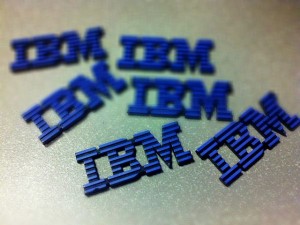IBM has been a pioneer in the digital technology arena for quite a while now and the company is all set to push humanity into a whole new era of technological development once again. According to reports, the company has successfully been able to create a whole new kind of memory and logic chips that are non-volatile and consume much less energy to function than any other kind of chip currently in existence.

The Technology
Most of today’s devices are silicon based and use conventional electrical semi-conduction. IBM’s new chip, however, can be powered through minute ionic currents. This method basically mimics the way the human brain operates and is totally event driven as it uses streams of charged atoms.
How does it work?
Computers today typically use CMOS process technology based semiconductors that were previously thought to be versatile enough to be decreased in size and double in performance every two years. Even though that has stood true for a long while now, we still need materials and technique to ensure performance and ways to supersede physical limitations. What this basically means that to reduce the size and increase the efficiency of computer chips further, new solutions and perhaps even a whole new class of computer chips would need to be invented.

That is precisely what the IBM scientists claim to have done. IBM research scientists showed that it is possible that oxygen ions driven by electric fields at oxide-liquid interfaces can be inserted and removed to reversibly transform metal oxides between conductive and insulating states. IBM experiments showed that once the oxide materials have been transformed into a conducting state, they maintain a stable metallic state even when an active power supply to the device is taken away. Being non-volatile, these chips work in a more event-driven, more efficient manner to store and transport data rather than needing a constant power supply to work.
The researchers used an insulating vanadium dioxide (oxide material) and applied a positively charged ionic liquid electrolyte to it. This helped convert the material to a metallic state successfully. The state was held by the material until the application of a negatively charged ionic liquid electrolyte which allowed it to convert it to its insulating original state.
How it makes a difference
These materials have been researched for a long while though it wasn’t until now that researchers found that the changes in state of the oxide material when subjected to intense electric fields occurs because of the removal and injection of oxygen into metal oxides. Previously, applying an external stress or changing the temperature were the only ways through which the transition from a conducting state to an insulating state could be achieved, though neither of these methods was too conducive to use in devices. In comparison to the silicon based information technologies of today, these chips operate on entirely different principles and could potentially revolutionize the way devices are made and used in the future.





